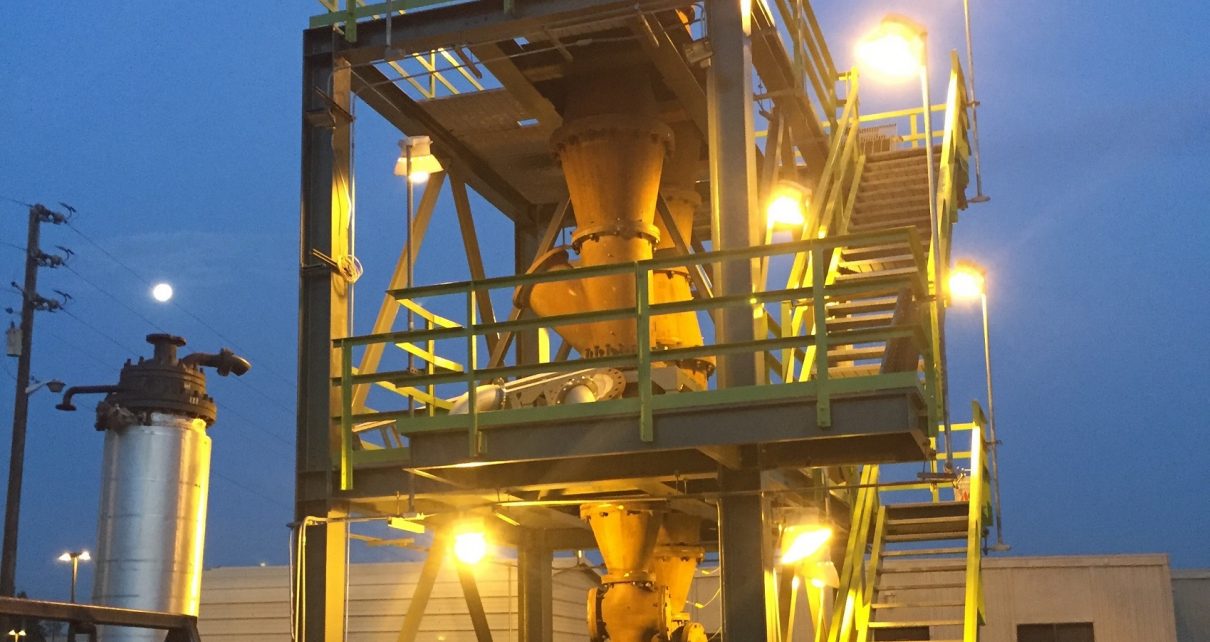
Natural gas production. (Photo: ucr.edu)
Ringside: Evaluating Underground CO2 Sequestration in California
California’s natural gas power plants are being wasted
By Edward Ring, March 20, 2024 10:20 am
 While the confirmed skeptic will consider Carbon Capture and Sequestration (CCS) to be the ultimate waste of money, it nonetheless is happening. Billions of dollars have already been committed, with no end in sight. Regardless of how one might judge its necessity, having some facts about CCS belongs in any serious discussion about California’s energy future. So here goes, starting with natural gas used for generating electricity.
While the confirmed skeptic will consider Carbon Capture and Sequestration (CCS) to be the ultimate waste of money, it nonetheless is happening. Billions of dollars have already been committed, with no end in sight. Regardless of how one might judge its necessity, having some facts about CCS belongs in any serious discussion about California’s energy future. So here goes, starting with natural gas used for generating electricity.
According to the California Air Resources Board, natural gas fueled electricity generating plants emit approximately 42 million metric tons (MMT) of CO2 per year, which is 11 percent of California’s total emissions of CO2, estimated at 381 MMT in 2021. These plants also generated over 97,000 gigawatt-hours of electricity, fully 50 percent of California’s in-state electricity production in that year. What if all of that CO2 could be pumped underground?
One primary consideration would be whether or not there is enough underground capacity for all this CO2. Estimates of capacity vary a great deal. A 2006 study by the California Energy Commission and the U.S. Dept. of Energy came up with a range between 146 and 840 gigatons of “geologic carbon sequestration potential in California.” According to a 2007 DOE study, the “estimated storage capacity of saline formations in the ten largest basins in California ranges from about 150 to about 500 Gt of CO2.” A more recent 2021 study by the Stanford Center for Carbon Storage concluded “California could store 60 million tons per year for more than 1,000 years.”
The somewhat surprising consensus is unequivocal. There’s plenty of room down there. A gigaton is a thousand million tons. Which means that even the implied 60 gigaton capacity referenced in the Stanford study, by far the lowest estimate, could accommodate the current level of CO2 emissions from California’s natural gas power plants for over 14 centuries. But what about the cost to retrofit these plants?
The good news is that compared to extracting CO2 from the atmosphere, extracting flue gas from natural gas power plants is much easier and less costly. That’s because atmosphere is about 0.04 percent CO2, whereas in flue gas emissions from natural gas power plants the CO2 is at least 100 times more concentrated. Skeptics take note – focus your reality checks on the schemes out there to remove CO2 directly from the atmosphere. It’s orders of magnitude more impractical.
As for flue gas, according to a 2023 DOE analysis that analyzes the energy required as well as the construction retrofit cost to extract CO2 from flue gas, the energy required will consume about 13 percent of a power plant’s total electrical output, and cost an estimated $1.3 million per net megawatt of capacity. What does this portend for California’s fleet of natural gas power plants?
It’s important here to emphasize that basing retrofit costs on general estimates, even though they are credible and recent, is a tricky business. For starters, everything costs more in California, so while the cost to retrofit a natural gas power plant in Texas to sequester its CO2 emissions might come in under the DOE estimate, doing that here in California might cost considerably more. Moreover, each plant will have distinct features that may add or subtract costs. But to rely on the DOE figures, it would cost $44 billion to retrofit every one of California’s natural gas powered generating plants to extract CO2 from their emissions and pump it underground.
Don’t laugh. $44 billion is not that much.
To begin with, California’s natural gas power plants are being wasted. While they typically generate just under 100,000 gigawatt-hours each year, half of in-state capacity and one-third of total electricity consumption (we import about one-third of our electricity into California from other states), they are capable of generating well over 300,000 gigawatt-hours. This is because California’s natural gas power plants, for the most part, are kept offline until the sun goes down or the wind stops blowing, wherein they’re fired up to make up the difference. In 2022, their uptime was only 28 percent.
This is an incredible waste. California’s reported total system demand in 2022 was 277,764 gigawatt-hours, which is 31.7 gigawatt-years. When vehicle-to-grid technology matures, there will be no need to buffer intermittent solar and wind energy with utility scale storage. If only 10 percent of California’s 31 million motor vehicles were Electric Vehicles, upgraded with bidirectional charge/discharge capacity, parked and connected EVs (or plug-in hybrids) will receive and send energy to the grid as needed, and kWh price arbitrage will disappear. The average grid load, if that were true in 2022, would have been 31.7 gigawatts, day and night, without peaks, without valleys.
But what EVs, and electrification in general, do portend is the need for more electricity. A lot more. For the moment a precarious detente exists between California’s producers of electricity via natural gas versus solar and wind. Renewables need peaker plants until storage ramps up. The apparent game plan, though, is to kill off natural gas power plants one by one, as battery farms expand. So one must ask: What is the cost of replacing 300,000+ gigawatt-hours per year of natural gas capacity with wind, solar, batteries, and massively expanded high voltage transmission capacity? And how does that compare to the roughly $40 billion cost to retrofit natural gas power plants to pump their CO2 underground?
With all this in mind, next week we’ll take our most detailed look yet at the estimated total construction cost for offshore wind, an integral part of California’s current energy strategy. How the cost for offshore wind shall compare to simply retrofitting our fleet of natural gas power plants will be interesting.
- Ringside: Will the Delta Pumps Operate at Capacity this Winter? - December 18, 2025
- Ringside: Will Advocates for More Water Supply Projects Find Unity? - December 11, 2025
- Ringside: EVs and California’s Future Demand for Electricity - December 4, 2025





44 Billion may not be much to you but it is an incredible waste of money that would be better spent on things people actually need like maintaining California’s awful roads not to mention the world actually needs CO2 so that plants will grow. The entire scheme to take CO2 and put it under ground is scheme to depopulate planet by reducing crop yields and have us pay for it with ever increasing energy rates.
The point of the article isn’t to debate climate change, which deserves a lot more debate than it’s getting. Rather the point, as will be further emphasized with new data next week, is that CO2 sequestration in order to keep California’s natural gas powerplants not only running but operating again at full capacity, is far, far less expensive than constructing offshore wind. It also will cause far less harm to the environment. The return on investment for sequestering CO2 from California’s natural gas power plants is better than virtually every other big and wasteful project the state is either implementing or planning, and that would include not only offshore wind, but the Delta tunnel and, of course, High Speed Rail. These financial variables matter a great deal, because it is a lot of money, which is why we can’t do everything.
Do you think CO2 sequestration is safe? All the usual suspects say it is absolutely safe and that they “know” it is stable for thousands if not millions of years. I have serious doubts about it.
The idea of going along with the insanity to salvage a little bit of civilization is in itself insane when you realize the whole premise is false.
Do major polluting countries like communist China or India perform any carbon capture and sequestration? Probably next to none? This is insanity is being promulgated by the deep state and the globalist cabal to destroy and bankrupt California and the U.S? Maybe the unelected bureaucratic stooges at the California Air Resources Board should be fired and the Board dismantled?
The analysis of the $44 billion cost for CCS ignores that increasing generation at those gas plants also would cost another $50 per megawatt hour (at a minimum in fuel costs as we’ll ignoring the loss in efficiency from using CCS). That would be $10 billion per year, or more than $100 billion in present value costs. So we’re really talking about $150 billion in additional costs.
Not to mention that 44 billion dollar number is probably a government estimate so x10 to get a realistic number. Then there are the costs of actually injecting the CO2 into the ground. At some point the government would add punitive taxes for doing so and on and on.